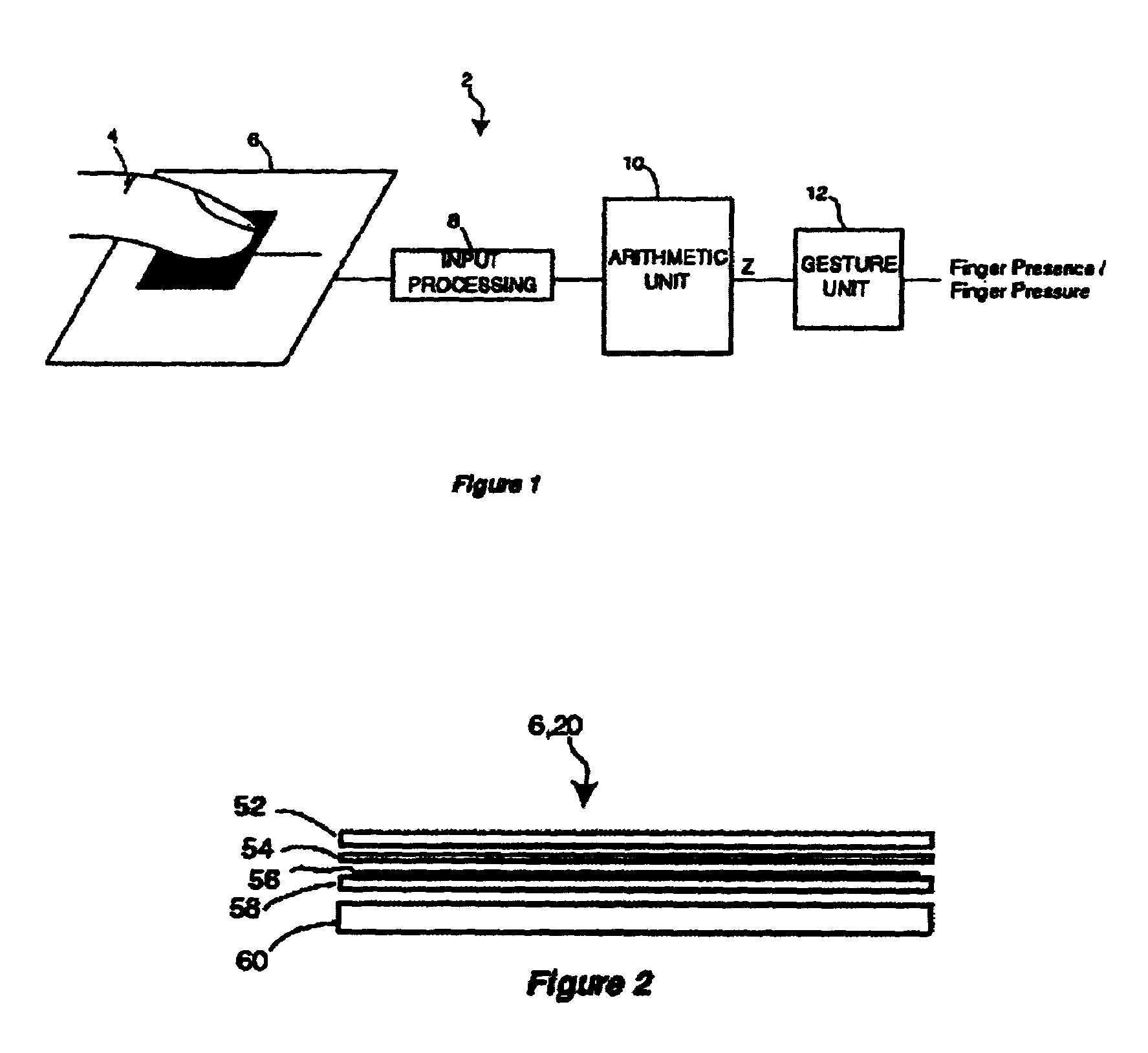Flexible transparent touch sensing system for electronic devices
a technology of electronic devices and touch sensors, applied in static indicating devices, instruments, mechanical pattern conversion, etc., can solve the problems of rugged art and positioning capabilities that require little to no user calibration, and achieve the effect of maximizing transparency, maximizing overlap between each plurality, and maximizing transparency
- Summary
- Abstract
- Description
- Claims
- Application Information
AI Technical Summary
Benefits of technology
Problems solved by technology
Method used
Image
Examples
Embodiment Construction
[0026]FIG. 1 is a schematic representation of a preferred embodiment of the invention, comprising a O-dimensional, capacitive proximity sensing system 2. System 2 accurately determines the proximity and contact of finger 4 or any other conductive object to the sensor 6. Capacitance changes induced by finger 4 on the sensor trace in the sensor 6 are digitized by the input processing block 8. The digitized values of capacitance values are processed by arithmetic unit 10 and then decoded by gesture unit 12 to determine if a finger was present. Gesture unit 12 also processes input signals to determine the difference between constant finger contact and a finger tap. Blocks 8–12 may also incorporate methods to suppress electrical noise that may be sensed by sensor 6. Suitable means of implementing this sensor include the technologies described in U.S. Pat. Nos. 5,880,411 and 5,305,017, which were incorporated in their entirety by reference thereto above for these teachings. Other means of...
PUM
 Login to View More
Login to View More Abstract
Description
Claims
Application Information
 Login to View More
Login to View More - R&D
- Intellectual Property
- Life Sciences
- Materials
- Tech Scout
- Unparalleled Data Quality
- Higher Quality Content
- 60% Fewer Hallucinations
Browse by: Latest US Patents, China's latest patents, Technical Efficacy Thesaurus, Application Domain, Technology Topic, Popular Technical Reports.
© 2025 PatSnap. All rights reserved.Legal|Privacy policy|Modern Slavery Act Transparency Statement|Sitemap|About US| Contact US: help@patsnap.com



